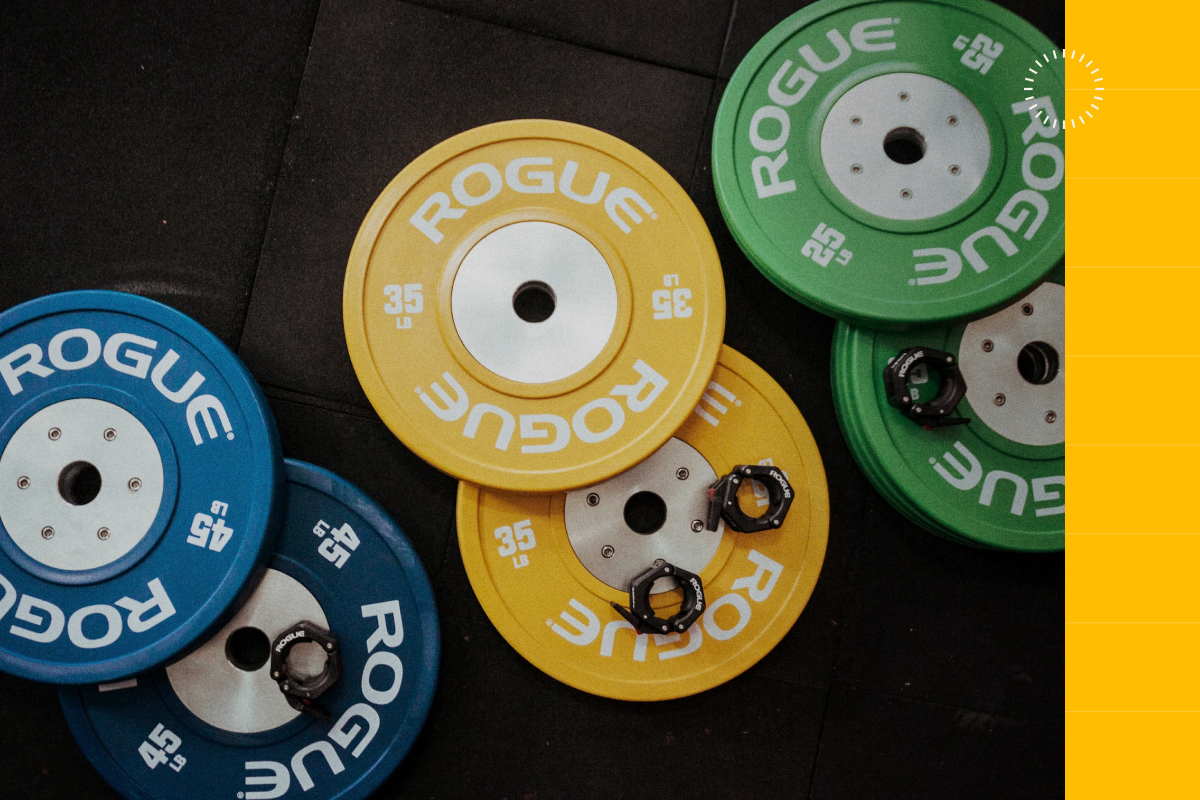Getting stronger is a slow process.
It requires some patience (something I wish I had more of).
Over time getting that extra rep, set or a bit more weight can get tough. It’s good to have a few different strategies up your sleeve to keep the momentum going and avoid boredom. Here’s some strength progression methods you can try:
1. Keep it simple with double progression
This is a classic way to progress weights. It’s simple and you can’t get it wrong.
You are already doing double progression if you have a workout written something like this:
3 sets x 4-6 reps
Pick a weight that keeps you in that rep range for 3 sets. You will then stay on the same weight each session. Once you perform all sets at the upper repetition range are you able to add load to the following session.
In this method you must “own the weight” before you can go heavier.
Example
Week 1: 80kg 4, 4, 4 reps (Started at the bottom of the range)
Week 2: 80kg 5, 4, 4 reps
Week 3: 80kg 5, 5, 4 reps
..
..
Week 8: 80kg 6, 6, 6 reps (Hit the top of the target range)
Week 9: 85kg 5, 4, 4 reps (Add load this week.)
Pros:
- Double progression has auto-regulation and periodisation built into. That’s some advanced concepts in a basic approach. As a dad, I think of this like sneaking vegetables in your kids’ food.
- You don’t have to think too much about programming.
Cons:
- You’ll need patience being on the same weight for weeks.
2. Push your limits with last set AMRAPs
AMRAP stands for As Many Reps As Possible. Also called a plus set. Either way the idea is the same. Push the set for as many reps as you can, leaving 1 or 2 in the tank. This concept is used in programs like 5/3/1 and Grey Skulls Linear Progression.
It’s written like this:
2 set x 6 repetitions
1 set x 6+ repetitions
So in this example if you get 6 or more reps on the last set you bump up the weight on the following week. If you get less than 6 then you reset next week. Start over with less weight by 10-15%. Here is how it plays out.
Example
Week 1: 6×70, 6×70, 10×70
Week 2: 6×72, 6×72, 9×72
Week 3: 6×75, 6×75, 8×75
…
…
Week 8: 6×80, 6×80, 5×80 (Last set dropped below 6.)
Week 9: 6×72, 6×72, 11×72 (Lighter load)
This method is clever as the first two sets start off easy. Then you have lots of energy and focus to concentrate on pushing the last set. Over time as it gets heavier all 3 sets become hard and you’ll do less total reps.
I like this method for those that don’t like grinding across multiple sets. Also for those who like to have the weight going heavier every week.
Pros:
- You can focus on the performance of one set.
- Can be fun to have a challenge set
- Because the weight is going up every week, it can feel like you are making progress.
Cons:
- You can get stuck in a cycle if you need to reset too often. Once this happens, you may need to change the rep target or method.
3. Freestyle with RPE stops
This is the freestyling sibling of the methods above. You will be performing all sets as AMRAPs with a cap on how hard each set is
It’s written like this:
3×6+ at @stop 8
3×6+ means for all three sets to perform for as many reps as possible. The “@stop 8” means Stop at RPE (Rate of perceived exertion) of 8. That converts to stopping or capping your set when you are 2 reps from failure. More on RPE for strength training here.
With this one you can choose week to week how you want to progress week to week. If you are above the minimum number of reps, you are free to either add more reps or add more load to the previous week.
Example
Week 1: 7×70, 7×70, 6×70
Week 2: 8×70, 7×70, 6×70 (Decided to stay at the same weight. Attempting to get more reps)
Week 3: 8×70, 7×70, 7×70 (Stayed at the same weight.)
Week 4:7×75, 7×75, 6×75. (This time I decided to increase the load. Reps may drop a little but still make progress.)
Pros:
- It’s flexible.
- Every set is a quality set. The intensity and difficulty stays in the sweet spot for all sets.
Cons
- It’s less structured so not everyone will like it. It comes down to preference.
- No clear end goal like the other methods. With double progression you are striving to hit the top end of the range. With the last set AMRAP, you’ll be trying to see how heavy you can go before needing to reset. AMRAP with RPE stops don’t have strict mini goals.
4. Make steady strength progress with cycling
Cycling is a way of structuring your strength program over a set number of weeks. You start out lifting moderate weight and finish lifting heavy weights. I’ve written about it in more detail here.
Example
Week 1: 3x6x90
Week 2: 3x6x95
Week 3: 3x6x100
Week 4: 3x6x105 PR
Unlike the other methods, the reps stay the same here and the load is what is changing each week.
Pros
- This stops you from going too hard all the time. The moderate week allows your body to recover.
- Get to chase a PR at the end of each cycle
Cons
- Can take some trial and error to get the cycle right
That’s it. Four different ways you can progress your strength. Have a play and see what works for you.


